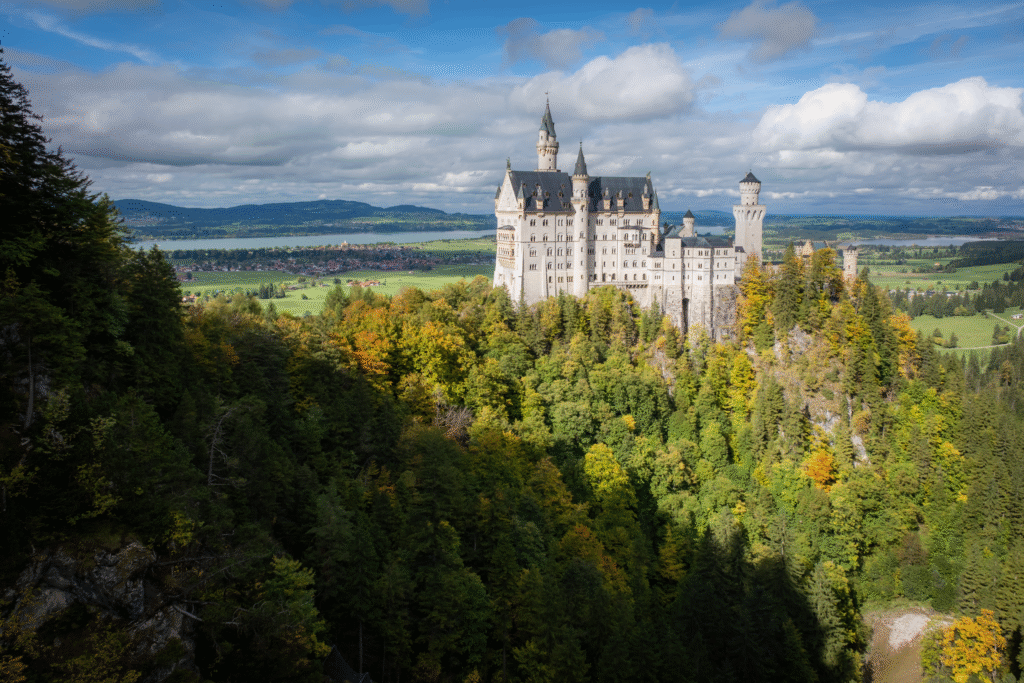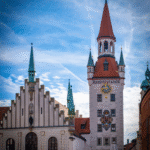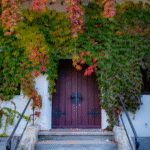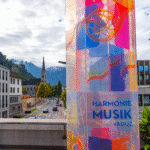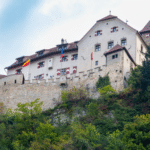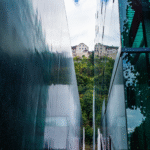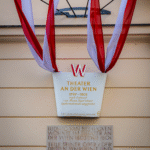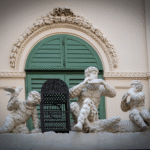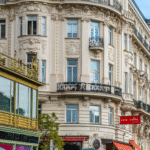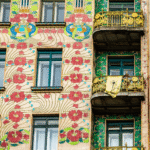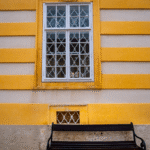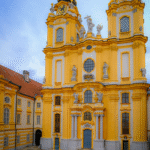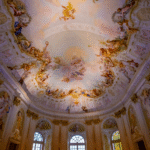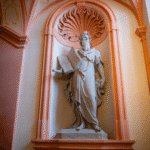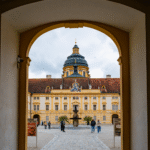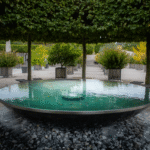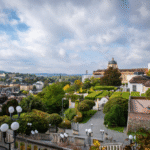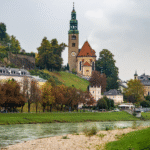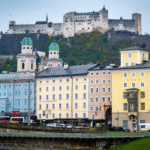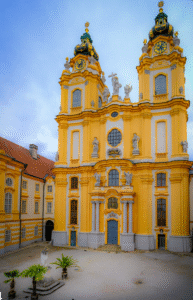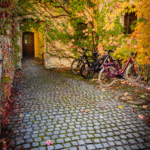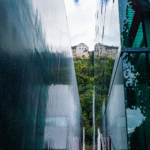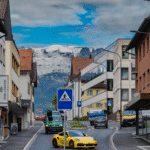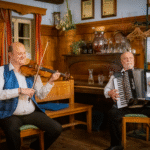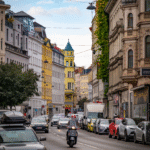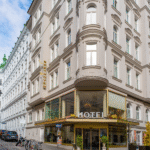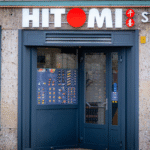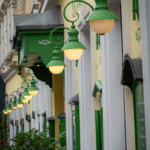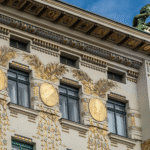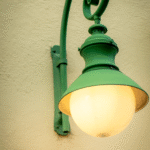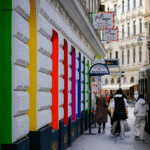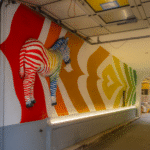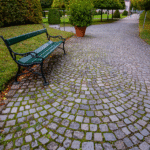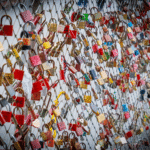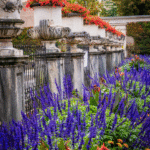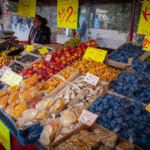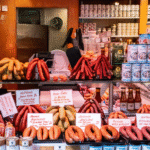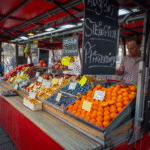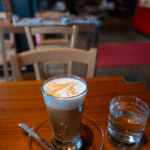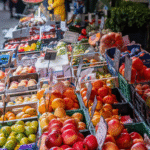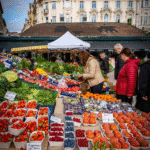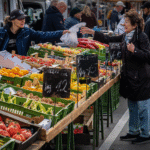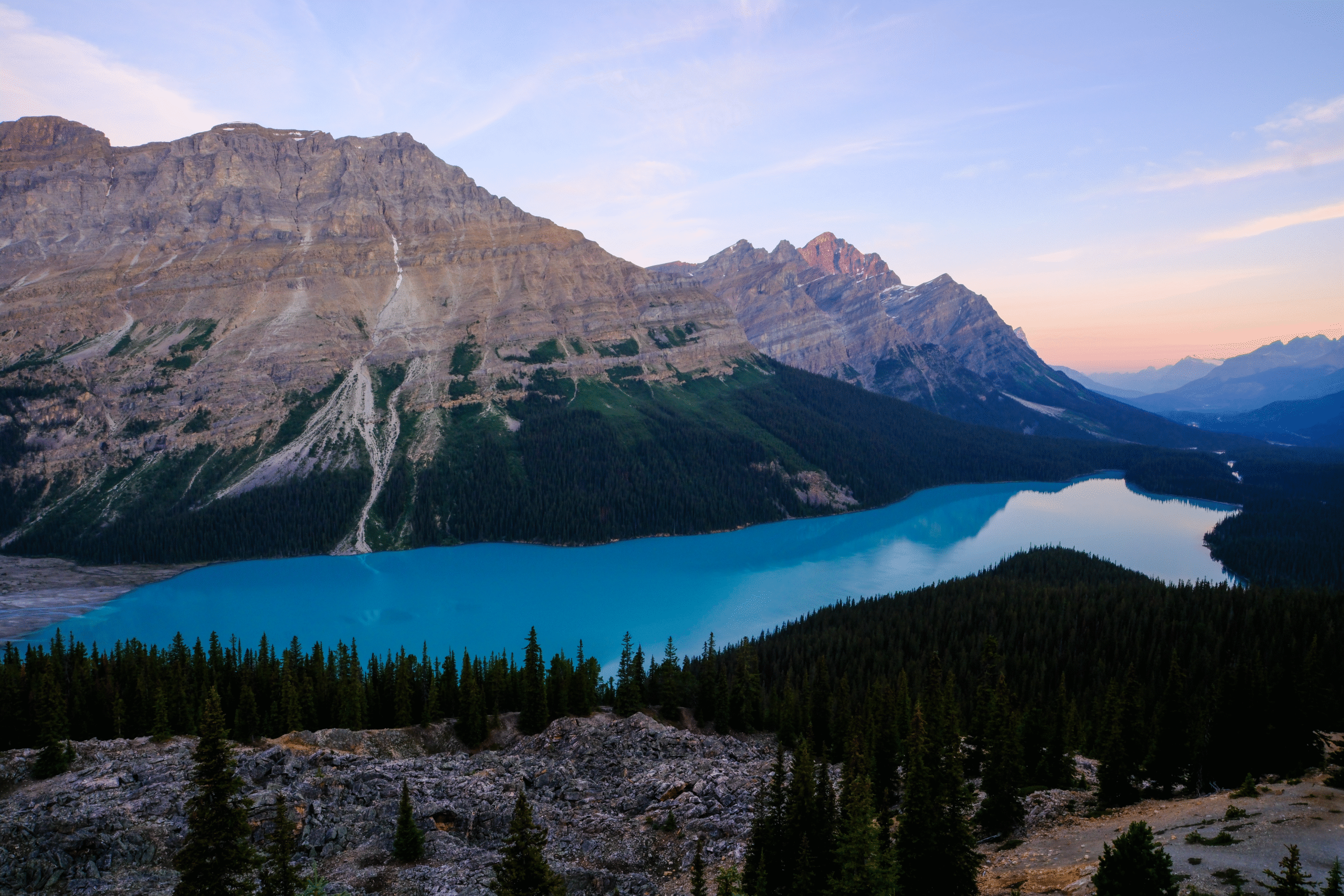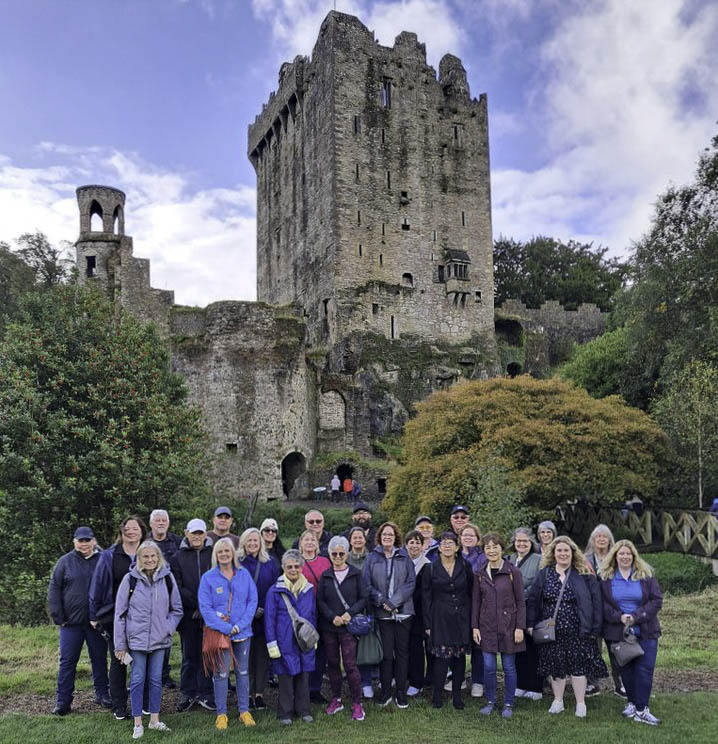Austria, Liechtenstein, and Germany 2025
Neuschwanstein Castle, Bavaria
The final leg of this trip included time in Munich, a backroad journey through Liechtenstein, and two days in Vienna Austria. The highlights included magically ornate palaces and monasteries, a lot of street exploration, and plenty of over-the-top architecture from another age. The photos are mingled together by topic instead of by location.
Ornate Period-Authentic Buildings and Decor at Every Turn
Great Hall of Nymphenburg Palace, Munich
Nymphenburg Palace, located in Munich, Germany, is one of Europe’s grandest Baroque palaces and a highlight of Bavarian history and architecture. Construction began in 1664, commissioned by Elector Ferdinand Maria and his wife, Henriette Adelaide of Savoy, to celebrate the birth of their son, Max Emanuel. Over the next century, successive rulers expanded the complex, transforming it into a lavish summer residence for the Wittelsbach dynasty.
The palace’s architecture reflects changing tastes—from early Baroque to Rococo and Neoclassical styles—resulting in a harmonious yet richly layered aesthetic. The central pavilion, designed by Italian architect Agostino Barelli, forms the original structure, while later additions include elegant wings, galleries, and courtyards.
Inside, the rooms are opulent showcases of art and craftsmanship. The “Steinerner Saal” (Marble Hall) is especially striking, with towering frescoes and gilded stucco. The Gallery of Beauties, commissioned by King Ludwig I, features portraits of 36 women celebrated for their beauty, painted by Joseph Karl Stieler.
The surrounding Nymphenburg Park covers over 400 acres, blending formal French gardens with English landscape design. It includes pavilions like Amalienburg, a Rococo hunting lodge known for its mirrored hall. Together, the palace and gardens offer a glimpse into the grandeur and evolving tastes of Bavarian royalty.
Melk Abbey: Melk Austria
Melk Abbey, perched high above the Danube River in Austria, is one of Europe’s most magnificent Baroque monasteries and a masterpiece of art, architecture, and spirituality. Founded in 1089, when Leopold II of Austria gave a castle to Benedictine monks from Lambach Abbey, it became a center of learning, faith, and culture that has endured for nearly a thousand years.
The current Baroque structure, built between 1702 and 1736 under architect Jakob Prandtauer, replaced the earlier medieval monastery. Its grand design reflects the Counter-Reformation spirit—celebrating divine order and beauty through rich ornamentation, vibrant frescoes, and dramatic symmetry. The golden-yellow façade stretches more than 300 meters, dominating the skyline of the Wachau Valley.
Inside, the Abbey Church dazzles with gilded altars, marble columns, and a ceiling fresco by Johann Michael Rottmayr depicting St. Benedict’s triumph in heaven. The library, one of Melk’s greatest treasures, holds over 100,000 volumes, including medieval manuscripts and illuminated texts, beneath a frescoed ceiling that symbolizes divine wisdom.
Today, Melk Abbey remains an active Benedictine monastery, a school, and a symbol of Austria’s religious and cultural heritage. It continues to inspire visitors with its blend of history, art, and the timeless pursuit of knowledge and faith.
Liechtenstein and Austria: Taking it to the Streets
Bikes parked in an apartment alcove in Vaduz Liechtenstein
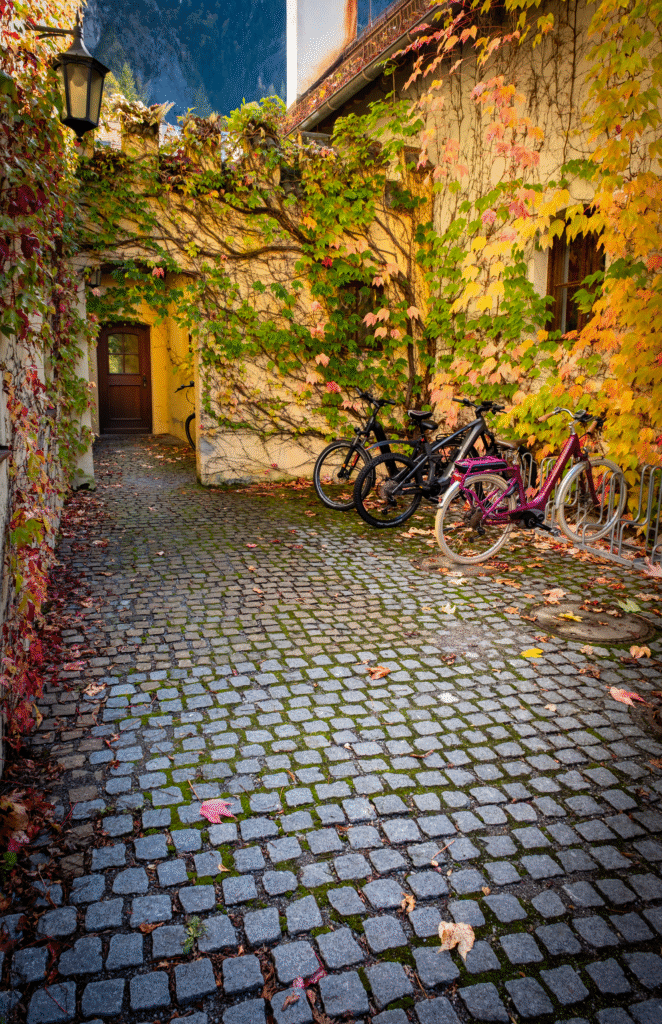
Though compact, Vaduz offers a cosmopolitan feel, with embassies, banks, and restaurants serving international visitors. Surrounded by vineyards and alpine scenery, it’s also a gateway to outdoor adventures—hiking, cycling, and skiing in the nearby mountains. Vaduz perfectly reflects Liechtenstein’s unique identity: small in size, but rich in culture, prosperity, and charm.
Shops and Markets
Of course, there is always a quest to see what the locals do in a destination, so these photos, or should I say “tourist-esque” snapshots, are simply to capture the vibe beyond the main attractions vying for my attention. In Vienna, I walked the city streets and alleyways for a couple of miles, and spent a fair amount of time at a giant outdoor market. It was acres of produce, artwork, and food, and overwhelming to my senses. Vienna downtown has plenty of vibrant graffiti at street level, but look above the ground floor anywhere, and you find magnificent architecture and decor older than anything European in the United States.
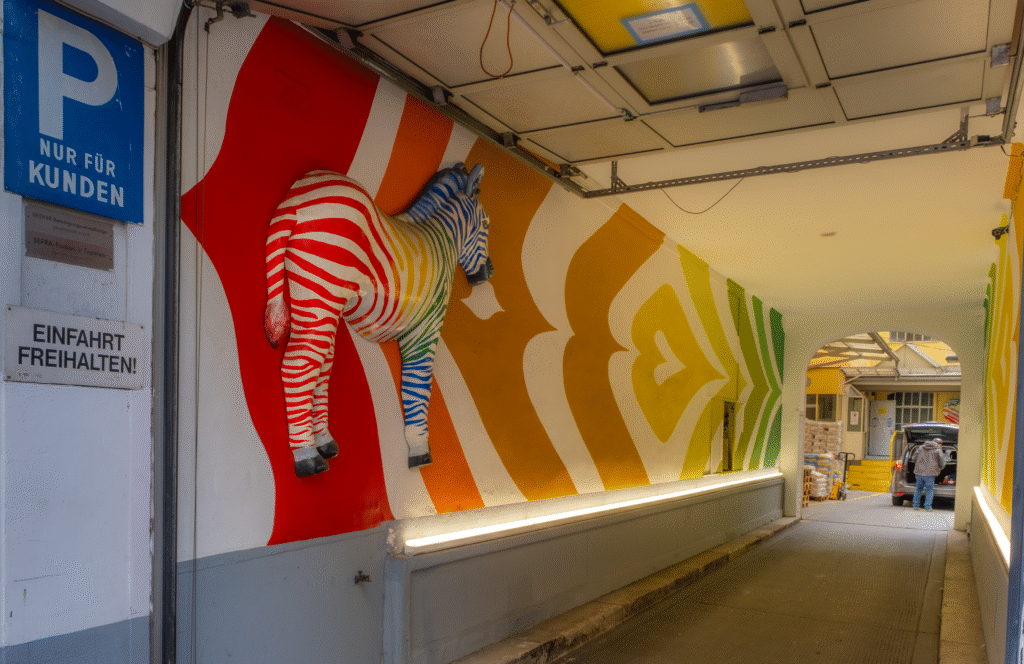
Odd, but undeniably interesting corridor to the back entrances to some businesses on a busy street in Vienna.

